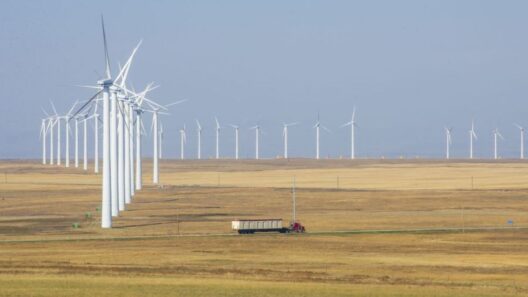Elevation plays a critical role in shaping climate and temperature across our planet. As one ascends from sea level to mountainous heights, a fascinating transformation unfolds, influencing not only the weather patterns but also the ecosystems and biomes present at varying altitudes. Understanding the dynamics of elevation allows us to appreciate the complex interplay between geography and climate.
One of the most significant aspects of how elevation affects climate and temperature is the lapse rate — the rate at which temperature decreases with an increase in altitude. Typically, this rate averages around 6.5 degrees Celsius for every kilometer gained in elevation. This phenomenon occurs because the air pressure is lower at higher altitudes, resulting in less energy being contained in the air and a corresponding drop in temperature.
This drop in temperature with altitude reflects broader climatic influences, affecting atmospheric pressure, humidity, and precipitation patterns. As we delve deeper into the intricacies of elevation, we discover not just the physical transformation of the environment but also the aesthetic appeal it brings to the natural world.
Mountains, plateaus, and highlands serve as magnificent backdrops for a range of climatic conditions. Think of the stark beauty of the Himalayan peaks versus the sun-drenched deserts at sea level. The diversity in ecosystems is astounding; alpine regions boast unique flora and fauna adapted to survive the harsh conditions, while lowland areas may thrive with dense rainforests teeming with life.
The impact of elevation isn’t merely confined to temperature and climate; it extends to human life and activity. Communities living in elevated regions have developed distinct cultures and practices, often adapting to the nuances of their environment. The rearing of crops varies dramatically between highlands and lowlands, where temperature variations dictate the types of produce that can flourish.
Moreover, elevation can alter wind patterns, significantly impacting rainfall distribution. In orographic regions, where mountains rise abruptly, moist air is forced upward, cooling as it ascends. This cooling results in condensation and precipitation, hence creating lush valleys on windward slopes. Conversely, the leeward side of the mountains experiences drier conditions, famously illustrated in the stark differences between the windward and leeward sides of mountain ranges.
Now, let us consider the implications of elevation on temperature and climate zones. The concept of climactic zonation becomes crucial — as elevation increases, there is a transition from one climatic zone to another, often leading to biogeographical shifts. Regions such as temperate, boreal, and tundra biomes can appear within a relatively small horizontal distance, showcasing a staggering array of biodiversity.
What becomes increasingly evident is that elevation does not act independently. The angle of the sun, the tilt of the Earth, and prevailing wind currents also intertwine with elevation to shape our climate. All these factors converge, resulting in distinct physical environments, each with its weather patterns and temperature profiles.
In addition, the concept of ‘climatic refugia’ arises in elevated areas. These are regions that remain cooler than their surroundings, providing a sanctuary for species, especially under the pressures of climate change. As lower altitudes heat up, these elevated areas remain crucial for biodiversity conservation, offering habitats for species that may struggle to adapt to increasing temperatures.
From glistening glaciers to vibrant alpine meadows, the aesthetic appeal of elevated environments is undeniable. These regions boast some of the most picturesque landscapes, providing a canvas painted with stark contrasts — the profound blue of the sky touching the rugged peaks, the greenery thriving in alpine conditions, and the pristine beauty of untouched nature. The interplay between elevation, temperature, and climate results in breathtaking vistas that not only captivate but also serve as vital reminders of the natural world’s delicate balance.
In conclusion, elevation is a formidable factor influencing climatic conditions worldwide. The relationship between altitude and temperature forms the basis of complex weather systems and ecological niches. Elevated terrains, with their unique climatic characteristics, sustain an enchanting variety of life while creating some of nature’s most stunning landscapes. Protecting these environments is imperative, as they are not only aesthetic treasures but also crucial for global climate health and biodiversity preservation.








